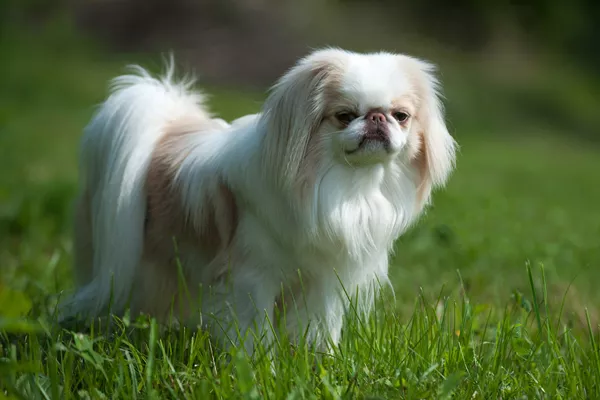
The Japanese Chin is moderately active indoors and does not require much exercise. This breed does best with a daily walk and occasional play sessions.
Daily brushing is required for your Japanese Chin's silky hair. Chins will often groom themselves to stay clean. Occasional professional grooming is recommended. Keep hair inside the ears well trimmed to avoid ear infections.
This breed is intelligent, lively, charming and affectionate. The Japanese Chin makes an excellent indoor companion. Good with other dogs and pets, this breed is best suited for homes without small children. Although it has a gentle nature, this dog enjoys being the center of attention. Chins have a tendency to be more obedient than other small breeds, and can be taught good manners and entertaining tricks. Barking is uncommon, so when a Chin barks you can be sure a stranger or disturbance is near.
Best suited in homes without small children.
Initially known as the Japanese Spaniel, there is some mystique around the true history of the Japanese Chin. It is believed to have originated in China, based on works of art from the 17th to the 20th Century. Most likely a cross between an early Japanese breed that resembled the old Continental Toy Spaniel from Europe and a Chinese Chin, also known as an Imperial Chin. They inevitably found their way to the laps of royalty in Imperial Palaces as part of the trade commerce of the time. The breed was shaped by Japanese nobility and introduced to the rest of the world when Japan reopened for trade in 1854. At that time, Commodore Matthew Perry was the first to bring the Chin to Europe, giving a pair to Queen Victoria. In 1863, Queen Alexandra, a Danish Princess who wed the future King Edward VII of Great Britain, brought attention to the Chin once again when one was given to her as a gift after the wedding. She was devoted to the breed, often surrounded by her many dogs, helping the Chin to gain popularity. The American Kennel Club recognized the Japanese Spaniel early on and in 1977, the breed was renamed the Japanese Chin.
Come see what’s new. View All Posts